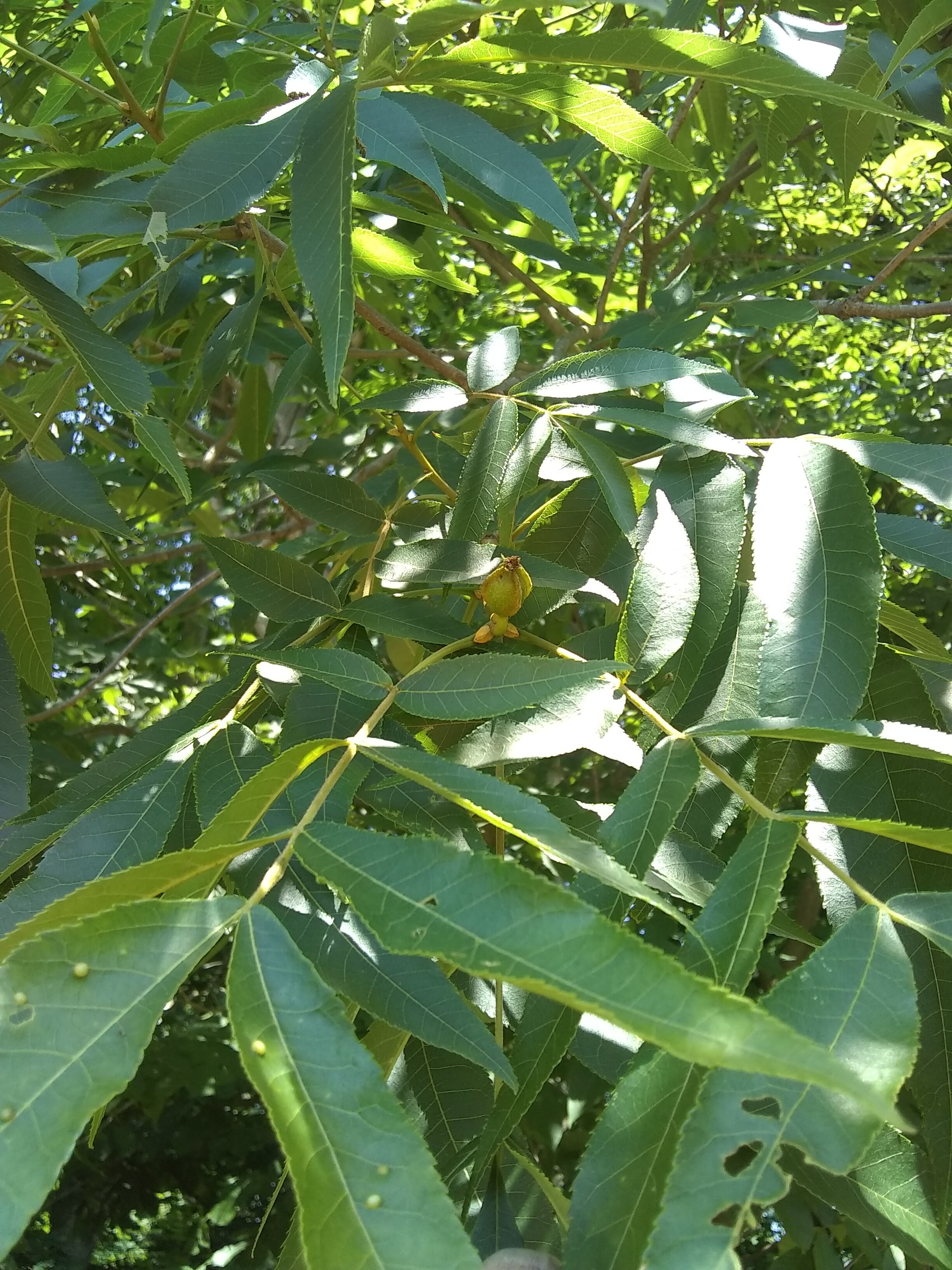Bitternut hickory
KTCC is seeking more bitternut hickory gatherers this 2020 season for a trial pressing of hickory oil this winter with our friends over at SilvoCulture. We are buying bitternuts by the gallon! If you have nuts you want to send us, please email keystonetreecrops@gmail.com for more details and information regarding pickup/delivery/shipping.
Now, a little bit about bitternut hickory. This nut is named because aside from being rich in oil (60-70%), it is also full of tannic acid, an astringent and bitter molecule to our taste buds. Tannic acid however is water soluble, therefore when bitternuts are pushed through an oil expeller, there is no water content in the final product — just oil. This means no bitterness, just the rich flavor hickory is famous for.
Bitternut hickory
Bitternut hickory is also known as yellowbud hickory because it has distinctive, yellow buds. This is an easy way to identify bitternut hickory in the field in any season. The bark of bitternut is relatively tight, of a dark hue, with diamond-shaped patterns between the furrows of the bark. Bitternut hickories have 7-11 leaflets per twig, and their foliage is a dark green above and a paler green below. The shape of the leaves is thin and lanceolate.
“Yellowbud” hickory
The nuts of bitternut hickory come singly or in clusters of 2 or more. These trees bear annually, every season, and with a consistent crop. The nuts are generally small, being about the size of a marble up to the size of a quarter. What they lack in size they make up for in productivity.
The easiest way to gather bitternut hickories is finding trees growing in grassy areas, like parks, and then using a nut wizard to quickly pick them up and fill buckets.



